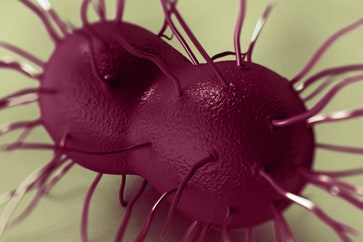Gonorrhea


Sexually active women younger than 25 years or women with new or multiple sex partners, or a sex partner who has an STD should be tested every year.

Gonorrhea has progressively developed resistance to the antibiotic drugs prescribed for treatment.

Gonorrhea can be cured with the right medication. Untreated gonorrhea can cause serious health problems.
Suspected Gonorrhea Treatment Failure Consultation Form – Healthcare providers and health departments can report suspected gonorrhea cephalosporin treatment failure or any N. gonorrhoeae specimen with decreased cephalosporin susceptibility to the CDC. (December 12, 2022)
Drug-Resistant Gonorrhea: Infographic – This consumer infographic highlights what drug-resistant gonorrhea is, as well as tips on how to talk openly and honestly with your healthcare providers and sexual partner(s). (November 14, 2021)
2021 STI Treatment Guidelines – Gonococcal Infections – Expands on treatment recommendations updated in December 2020, as well as testing options. Details on diagnosis, prevention, and special considerations also included. (July 22, 2021)
STI Prevalence, Incidence, and Cost Estimates in the United States – 1 in 5 people in the United States had an STI on any given day in 2018. These updated estimates provide the clearest picture to date of how common and costly STIs are in the United States. (January 25, 2021)
The State of STIs in the United States – This infographic highlights statistics for the three reportable STIs, as well as the populations most affected by these diseases, consequences of untreated STIs, and ways to prevent them. (January 30, 2024)